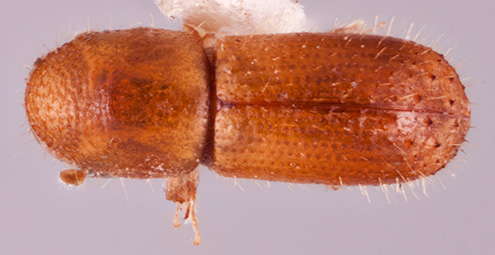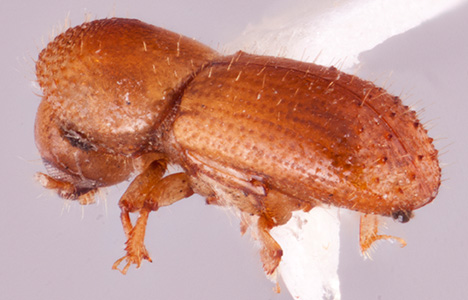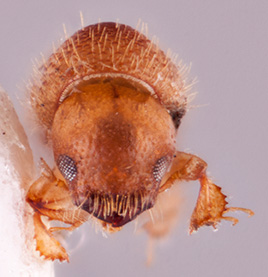Xyleborus perforans
|
Xyleborus perforans lateral; R.K. Osborn |
|
Xyleborus perforans dorsal; R.K. Osborn |
|
Xyleborus perforans declivity; R.K. Osborn |
|
Xyleborus perforans frontal; R.K. Osborn |
Taxonomic history
Tomicus perforans Wollaston, 1857: 96.
Xyleborus perforans (Wollaston): Eichhoff, 1878b: 403.
Synonyms
Bostrichus testaceus Walker, 1859: 260. Browne 1955: 355.
Xyleborus duponti Montrouzier, 1861: 265. Hagedorn 1910b: 108.
Anodius tuberculatus Motschulsky, 1863: 511. Wood 1969: 117.
Anodius denticulus Motschulsky, 1863: 512. Wood 1969: 117.
Xyleborus kraatzii Eichhoff, 1868b: 152. Schedl 1959: 503.
Xyleborus kraatzii philippinensis Eichhoff, 1878b: 374. Schedl 1959: 503.
Xyleborus immaturus Blackburn, 1885: 193. Beeson 1929: 240.
Xylopertha hirsuta Lea, 1894: 321. Schedl 1936b: 529, 1959: 503.
Xyleborus whitteni Beeson, 1935b: 113. Beaver 1991: 95.
Xyleborus apertus Schedl, 1939a: 355. Bright and Skidmore 1997: 4, 154.
Xyleborus criticus Schedl, 1950b: 899. Wood 1989: 177.
Xyleborus shionomisakiensis Murayama, 1951: 3. Smith et al. 2018b: 398.
Xyleborus cylindrus Schedl, 1951a: 94. Bright and Skidmore 1997: 4, 155.
Xyleborus minimus Schedl, 1955a: 305. Bright and Skidmore 1997: 4, 161.
Diagnosis
2.3−2.6 mm long (mean = 2.46 mm; n = 5); 2.67−2.89 times as long as wide. This species is distinguished by the protibiaprotibia:
'tibia of the first pair of legs
obliquely triangular, broadest at distaldistal:
situated away from the body
third; elytralelytral:
'pertaining to the elytra
declivitydeclivity:
downward slope of either the pronotum or elytra
 smooth, shiningshining:
smooth, shiningshining:
appearing glossy or bright in luster; referring to a surface that is polished and reflects light well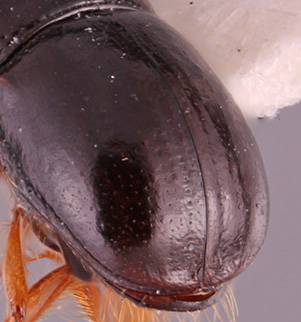 (specimen must be dry); declivitaldeclivital:
(specimen must be dry); declivitaldeclivital:
pertaining to the elytral declivity
interstriae 1, 3 armed with 2–3 pairs of moderate tubercles; interstriaeinterstria:
'longitudinal spaces along the elytra between the striae, which is not as<br />
impressed and bear smaller punctures.
 2 sparsely granulategranulate:
2 sparsely granulategranulate:
'pertaining to a coarse, grainy surface texture'
 at declivitaldeclivital:
at declivitaldeclivital:
pertaining to the elytral declivity
summit; and elytraelytron:
'
the two sclerotized forewings of beetles that protect and cover the flight wings
unicolorus.
This species is very similar to X. cognatus which has often been treated as a synonym of X. perforans, and X. volvulus. It can be distinguished from X. cognatus by the smaller size (vs 2.8–3.1 mm), generally stouter form (vs 2.8–3.1 times as long as wide), smaller interstrial tuberclestubercle:
a small knob-like or rounded protuberance of the exoskeleton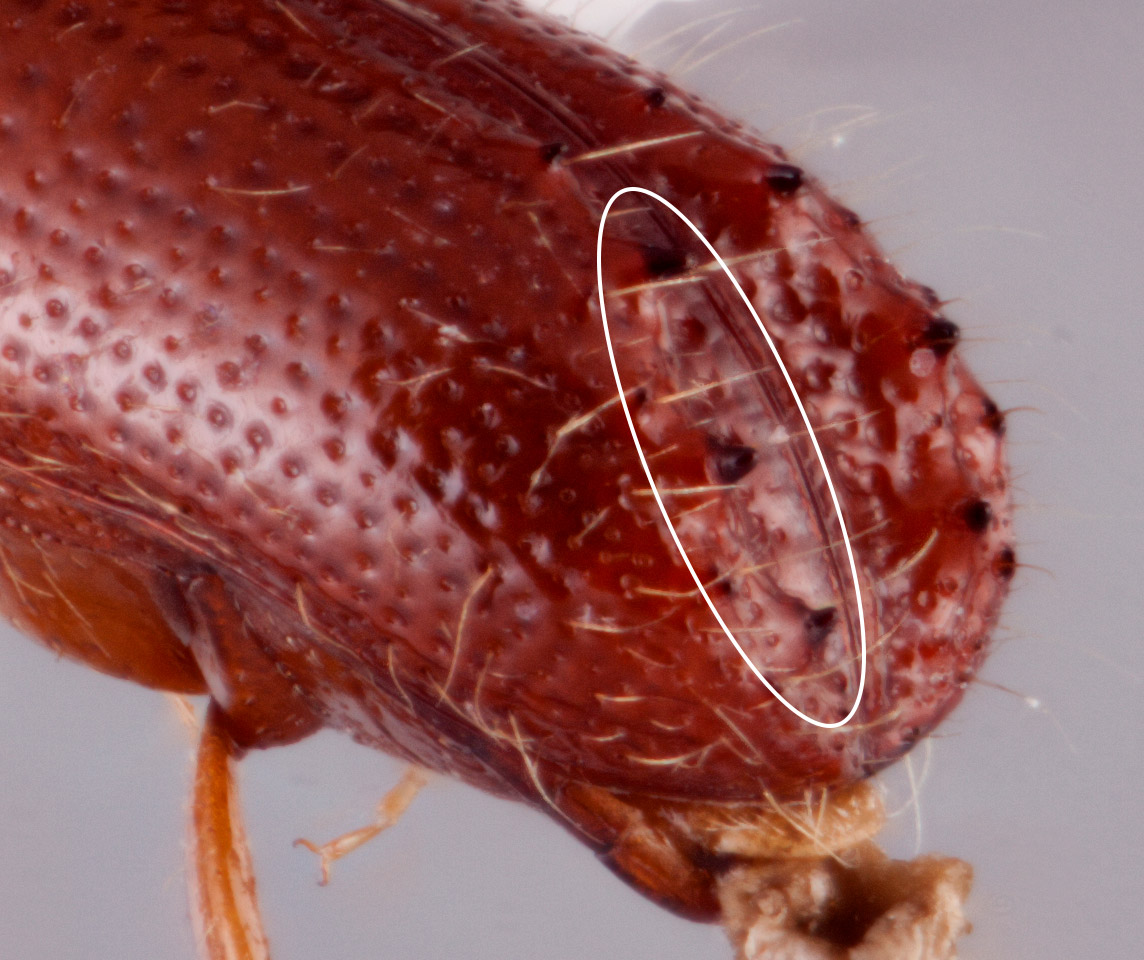 and unicolorus elytraelytron:
and unicolorus elytraelytron:
'
the two sclerotized forewings of beetles that protect and cover the flight wings
. This species is almost identical to X. volvulus and can be distinguished the stouter form (vs 3.13 times as long as wide) and interstriaeinterstria:
'longitudinal spaces along the elytra between the striae, which is not as<br />
impressed and bear smaller punctures.
 2 granulesgranule:
2 granulesgranule:
'a small rounded protuberance, like grains of sand
 only present at declivitydeclivity:
only present at declivitydeclivity:
downward slope of either the pronotum or elytra
 summit (vs entireentire:
summit (vs entireentire:
'without marginal teeth or notches
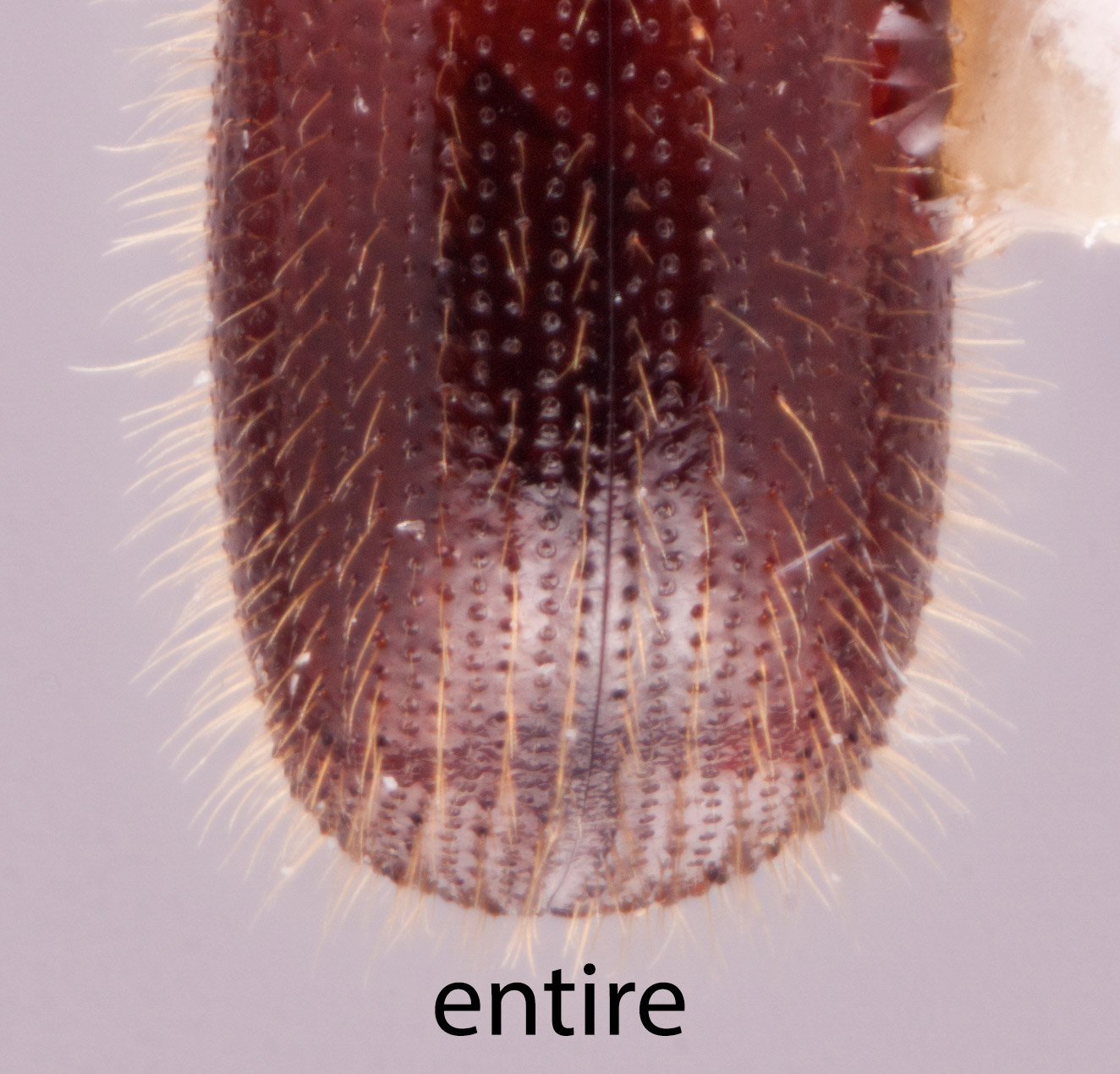 length).
length).
May be confused with
Xyleborus affinis, X. cognatus, X. ferrugineus, X. festivus, X. pfeilii, and X. volvulus
Distribution
throughout tropical parts of the Afrotropical, Australian and Oriental regions; recorded in the study region from Bangladesh, Bhutan, Cambodia, China (Guangxi, Hainan, Hong Kong, Shanxi, Yunnan), India (Andaman Is, Assam, Chhattisgarh, Haryana, Jharkhand, Karnataka, Kerala, Madhya Pradesh, Maharashtra, Meghalaya, Nicobar Is, Tamil Nadu, Uttarakhand, Uttar Pradesh, West Bengal), Laos, Myanmar, Nepal, Taiwan, Thailand, Vietnam
Host plants
strongly polyphagous (e.g. Browne 1961aBrowne 1961a:
Browne FG. 1961a. Borer beetles from Bako National Park (Sarawak). Sarawak Museum Journal 10: 300-318., Schedl 1963aSchedl 1963a:
Schedl KE. 1963a. Scolytidae und Platypodidae Afrikas. Band II. Familie Scolytidae (Fortsetzung), Unterfamilie Ipinae (Fortsetzung). Revista de Entomologia de Moccedil;ambique 5: 1-594., Gray and Wylie 1974Gray and Wylie 1974:
Gray B, Wylie FR. 1974. Forest tree and timber insect pests in Papua New Guinea II. Pacific Insects 16: 67-115., Ohno 1990Ohno 1990:
Ohno S. 1990. The Scolytidae and Platypodidae (Coleoptera) from Borneo found in logs at Nagoya port 1. Research Bulletin of the Plant Protection Service, Japan 26: 83-94.)
Remarks
The biology has been described by Beeson (1961), Browne (1961a), Schedl (1963a), and Kalshoven (1964). The species sometimes attacks weakened or injured trees, and can be a minor pest (Browne 1968aBrowne 1968a:
Browne FG. 1968a. Pests and diseases of forest plantation trees: An annotated list of the principal species occurring in the British Commonwealth. Clarendon Press, Oxford, xi + 1330 pp.), but its attacks are usually secondary. Due to its abundance, the species can be important in the downgrade of recently felled timber.
DNA data
Sequences available for COI and CAD.
COI: HM064132; MN620045; MN620046; MN620047; MN620048; MN620049


